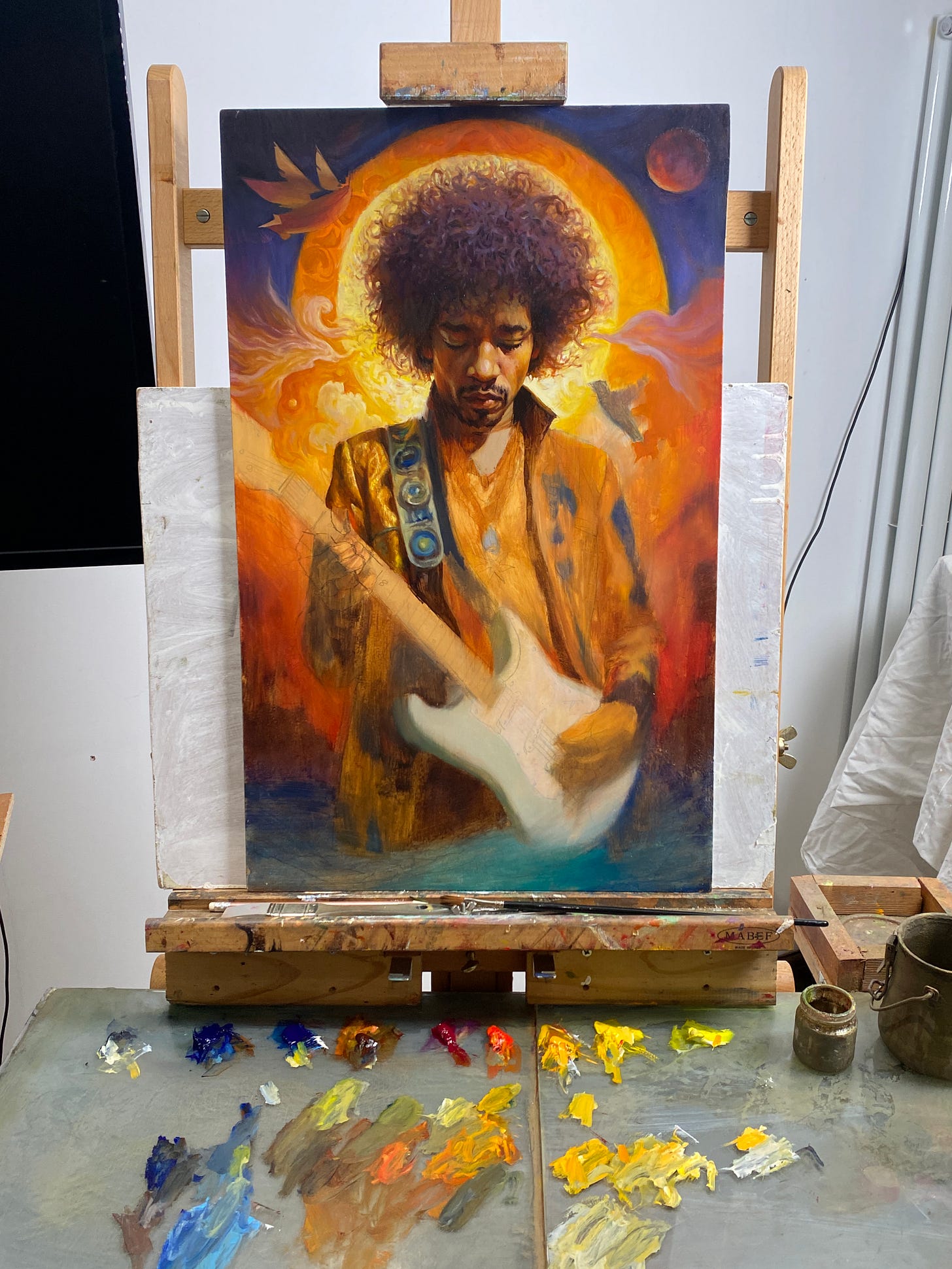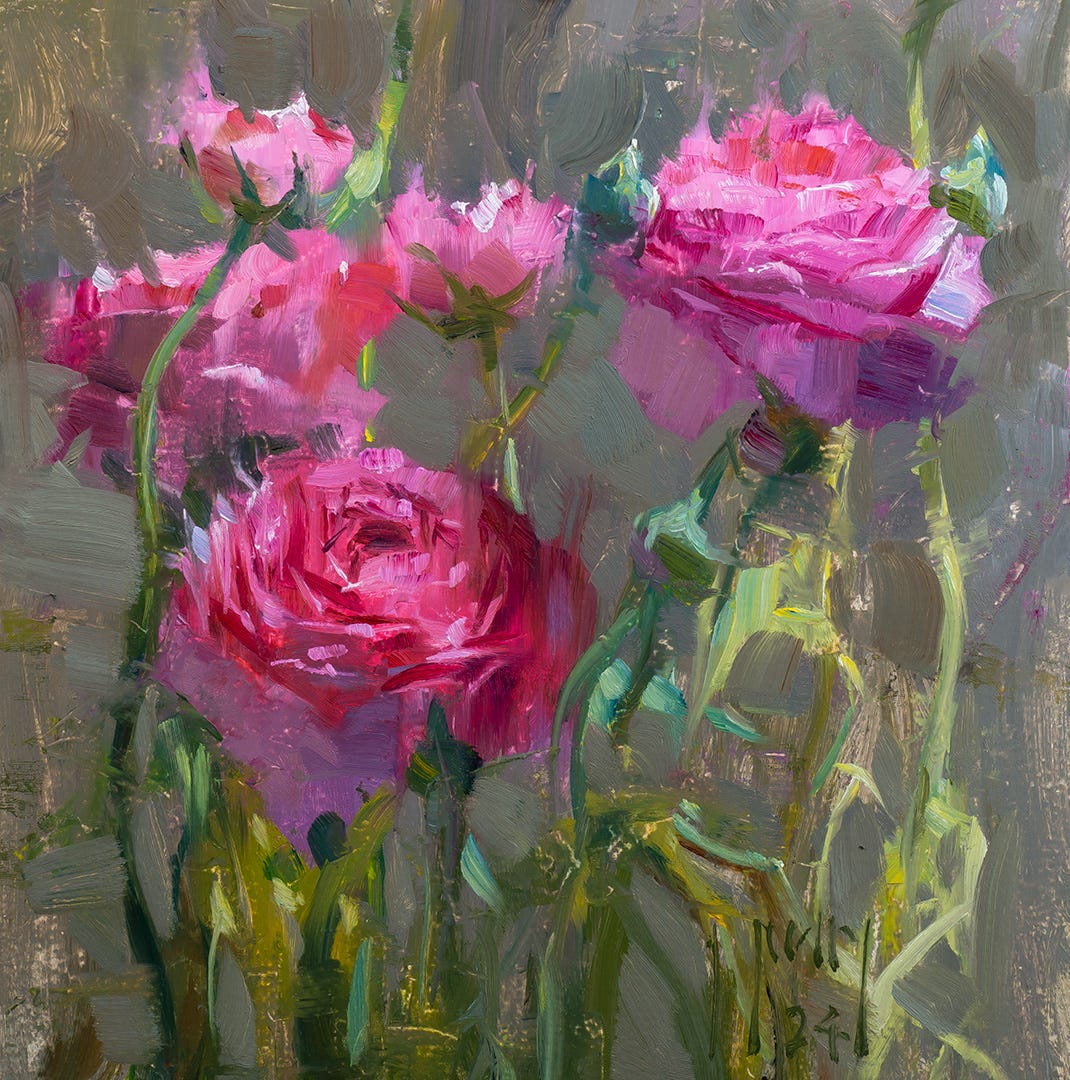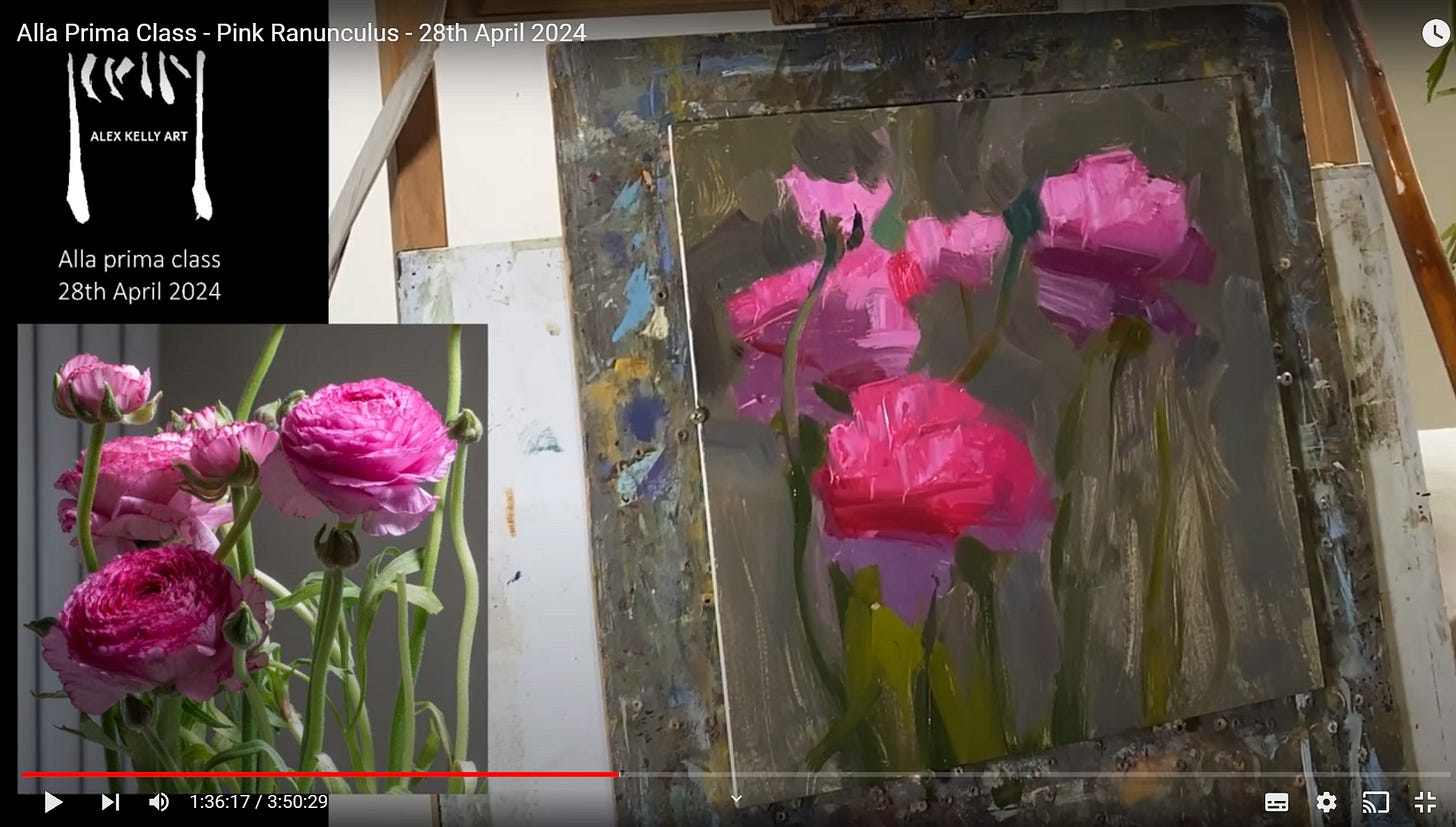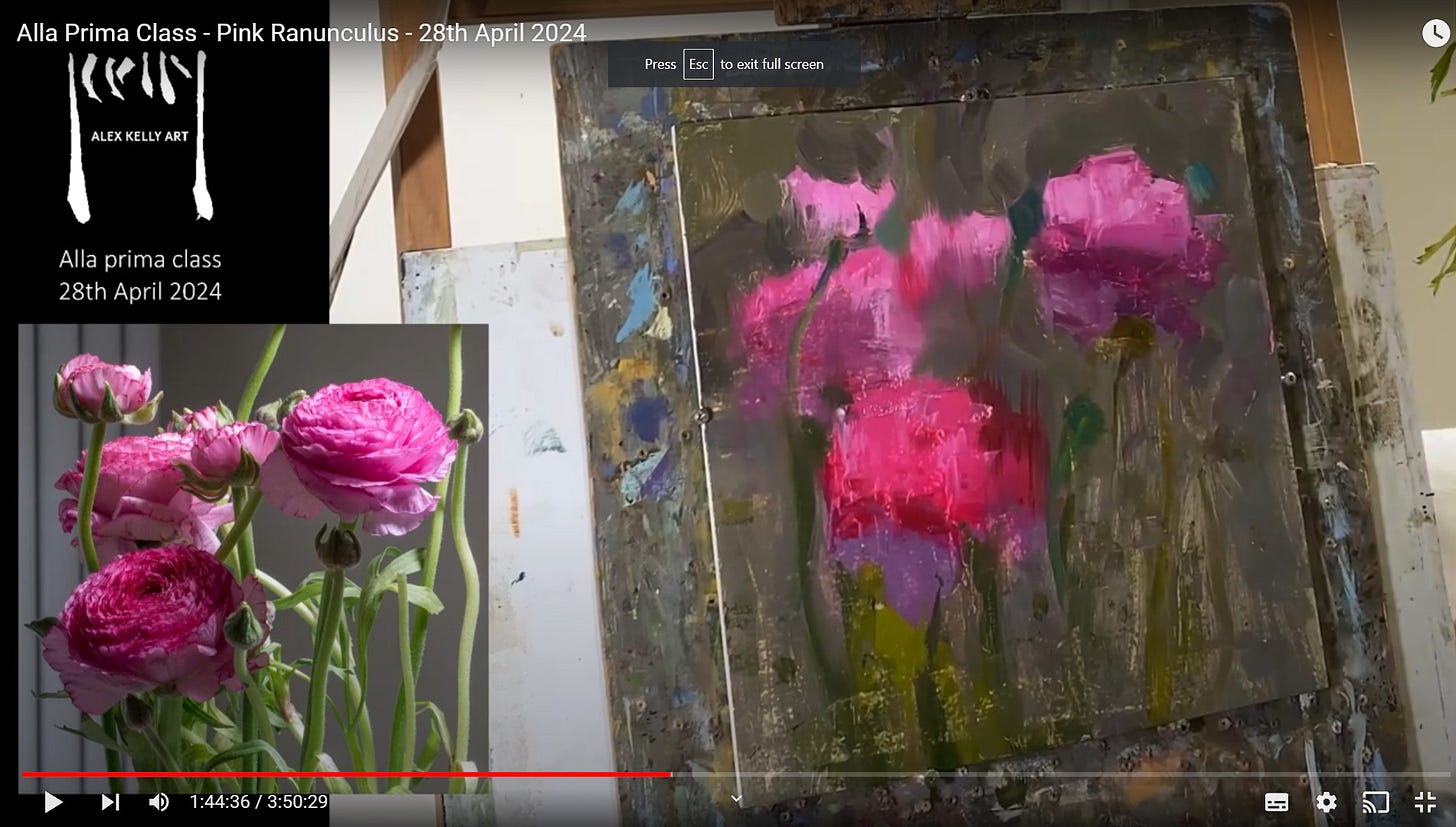Freedom of expression: walking the tightrope of control and looseness
"Looseness is not a frivolous departure from control, quite the opposite. It arises from the freedom which comes with superb control. Any athlete or accomplished performer will confirm that. That’s how pros and virtuosi are able to make their wonders seem so effortless. Therefore, looseness should describe how a painting looks, not how it is done."
Richard Schmid
Dear Subscribers,
I hope you're having a good week. Here's another newsletter to inspire and encourage your painting endeavours.
Apart from brainstorming ideas for future newsletters, I've also begun redesigning my gallery website. I'm using Portfoliobox, which offers contemporary templates similar to more expensive template builders like SquareSpace along with e-commerce integrations, all at a fraction of the cost.
UPDATE: My new website is now live, and I've put some paintings on sale too!
Imaginative Realism
I've been delving into a longer-term painting project recently, exploring a genre sometimes referred to as "Imaginative Realism." Unlike my primary focus on painting from life, this genre takes a more narrative approach, with classical origins.
One definition is: “Imaginative realism combines classical painting techniques with postmodern narrative subjects, focusing on the unreal, the unseen, and the impossible, offering visions of humanity’s mythic past, its unexplored future, and, in some cases, the terrifying present.”
James Gurney has a book of the same name which has the subtitle “How to paint what doesn’t exist” which is nicely succint way of describing it.
In the introduction it says:
”This book explores the question of how to paint a realistic picture of something that doesn’t exist. It is intended not only for artists interested in fantasy and science fiction but also for anyone who wants to recreate history, visualize extinct wildlife, or simply tell a story with a picture.”
Here is an in progress pic of what I’ve been working on:
The creation process for "Imaginative Realism" is notably distinct from "alla prima from life." It aligns more closely with the classical technique of indirect painting in layers and unfolds at a slower pace, allowing for the development of narrative ideas. It all begins with the conception of an idea, which could be a blend of written, visual, or symbolic elements. In my case, I drew inspiration from the visionary and dreamlike quality of Jimi Hendrix's music and lyrics. This initial spark guides me as I gather and generate pictorial references, weaving together symbolic elements in a harmonious composition. Unlike the more instinctive approach of alla prima from life, this process is highly cerebral, rooted in thoughtful planning and execution—a contrast between the 'head' and 'heart,' you could say.
Painting ‘crits’
In addition to the above, I'm considering offering monthly painting critiques exclusively for paying subscribers. I’m sometimes asked to give provide feedback on others' work via my social media followers, and I believe this could be expanded into a more structured format through this newsletter. Critiques not only offer valuable insights into the how and why of painting but also spark engaging discussions about various artistic techniques and principles. I would keep the author of the work anonymous.
In other news, I recently hosted a live online class, and the recording is now accessible for paying subscribers. During the session, I completed a painting within approximately three hours. Returning to the theme of this newsletter, it's worth noting that looseness in painting primarily pertains to how one handles edges and brushwork. However, it's essential to maintain precision in other visual elements such as drawing and value to ensure the overall naturalism of the artwork.
In the video, I demonstrate my preferred method of deconstructing a painting, which occurs only after the block-in is well established.
Below is a screen grab from the video of the completed block-in:
And then below, after some gentle deconstruction, paying particular attention to breaking and softening edges in an appropriate way. To decide what's appropriate, one should squint slightly at the subject to discern where the lost, soft, and hard edges are.
One possible way to understand the process as a whole might go like this:
Drawing/ shapes/ composition
This is the scaffolding of the work to come. In practice the shapes and process of drawing may be focused mainly in the beginning or develop and be refined throughout all the following stages.
Blocking-in
Establishing light and shadow masses. Dennis Perrin called this the ‘value map’, which is perhaps a better description of its function. This stage should be a simple representation of the subject in its entirety. When you stand back from the painting it should strongly convey both the sense of light and form that you would like to see in the finished paintuing. Some block-ins may be simple and some more complex. Sometimes it's not clear when the block-in is done as it develops seamlessly into the subsequent stages. Not all painting approaches will have a block-in stage. If you know Richard Schmid’s book Alla Prima, he describes several methods of getting from start to finish. One method, which he calls ‘selective start’, doesn't have a block-in stage at all. It might be interesting to discuss these different approaches in a future newsletter. Personally, I find the block-in a very useful concept and a very practical way of establishing both the overarching composition and value structure as they are often the cause of why a painting fails to reach our vision.
Deconstruction
One of my favourite methods is to partially/selectively destroy the block-in with various tools. This is really a two part process introducing some chaos and then selecting what you what to preserve/develop and downplaying what doesnt contribute to the principle of harmony and variety - or order and chaos. These two are always at play within any work of art. When order predominates then the work fails to hold our interest - its lacks mystery and surprise. When variety goes too far then things become confusing and may lack a satisfying resolution. With all painting there is an element of chaos which may deliberately introduced as a distinct stage/technique or throughout the painting process or simply as consequence of the media which has inherent chaotic tendencies in its use. Watercolour is a good example of this - where ‘happy accidents’ are appreciated as a quality of the media itself.
Rebuild and refine
This is partly a stage of selection, preserving some of the variety from the deconstruction stage and also rebuilding the harmony (from the block-in stqge) that may have been lost. This is the stage where refinement of the block-in stage tends to be most apparent as the subtleties of value, hue, chroma are noticed and stated in the painting. Its also when edge realtionships are established more clearly in all their variety. Shapes (and so drawing) are also brought up to a higher level of accuracy which may be seen to a greater or lesser degree depending on the subject matter (florals generally require less diligence with drawing than portraits).
These stages are not necessarily 1-4 in that order as the process overall is one iteration from any stage. From stage 4, we could return to stage 3 and deconstruct again. One could start at 3, by having a chaotic start with no distinct shapes/drawing and then slowly building, selecting and resolving from there.
That's all for this newsletter. I will return to the subject of the block-in again as it is a very effective tool for all painting endeavours.
If you are a paying subscriber, you can watch the full recording of the painting process below.
Wishing you a great week ahead!
Best regards,
Alex






